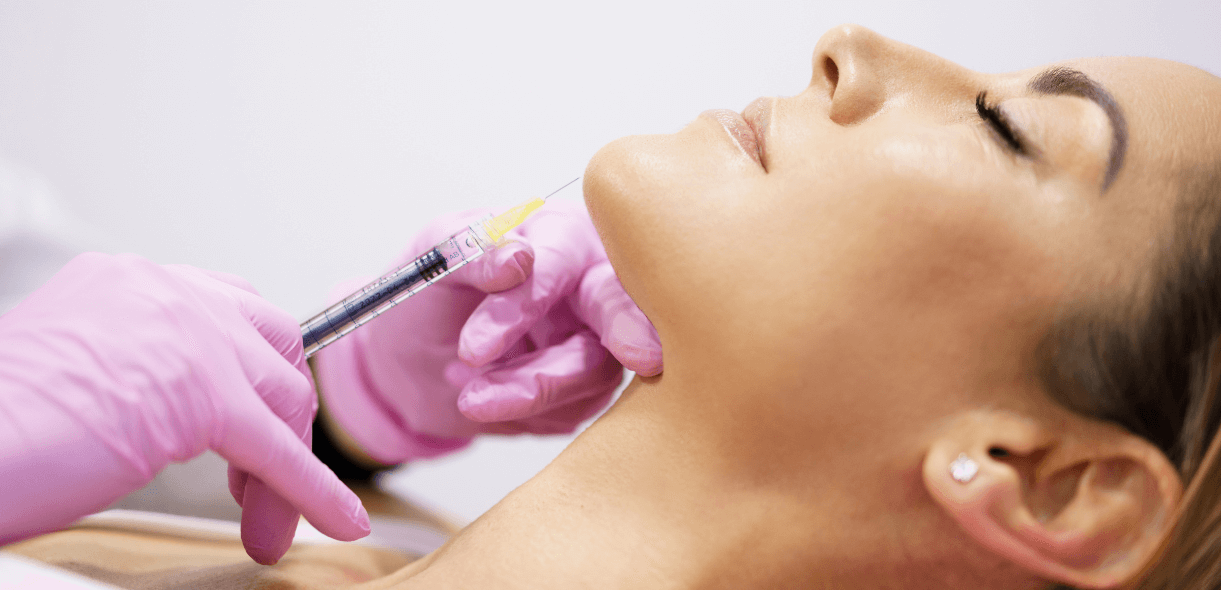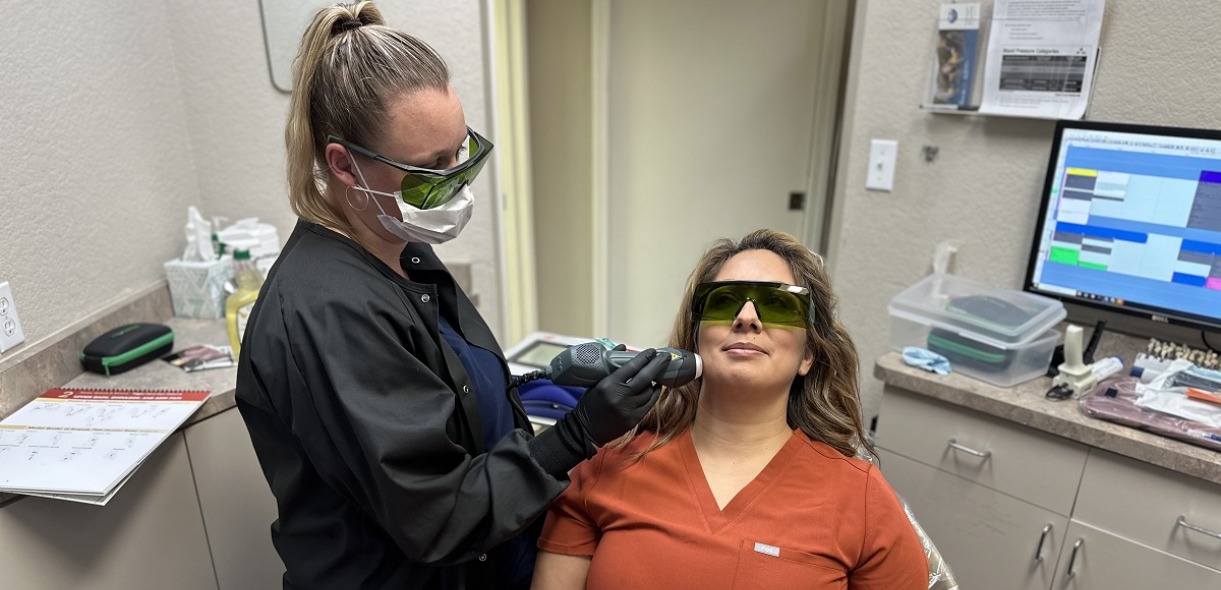The Benefits of Laser Therapy for TMJ: How It Works and What to Expect?

Experiencing TMJ pain can be disruptive and frustrating, impacting daily activities and diminishing overall quality of life. However, relief may be closer than you think. TMJ disorders, or TMJD, encompass a range of conditions affecting the temporomandibular joint and surrounding muscles. Symptoms can include jaw pain, clicking or popping sounds, and difficulty chewing.
For those seeking relief from TMJ discomfort, laser therapy offers a promising alternative. By harnessing the power of concentrated light energy, laser therapy targets inflammation, promotes tissue healing, and provides natural pain relief. In this comprehensive guide, we’ll explore the benefits of laser therapy for TMJD, uncovering how it works and what to expect from this cutting-edge treatment.
In the following sections, we’ll delve deeper into the mechanisms behind laser therapy and its transformative effects on TMJ pain and function.
Understanding TMJ Disorders
TMJ disorders, also known as temporomandibular joint disorders, encompass a range of conditions affecting the jaw joint and surrounding muscles. Symptoms include jaw pain or tenderness, clicking or popping sounds when opening or closing the mouth, and difficulty chewing or a sensation of the jaw locking.
Exploring Common Causes
- Bruxism: Teeth grinding or clenching can exert excessive pressure on the jaw joint, leading to muscle tension and joint inflammation, contributing to TMJ dysfunction.
- Jaw Misalignment: Genetics, injury, or poor dental work can result in jaw misalignment, straining the jaw joint and surrounding muscles, and causing TMJ-related symptoms.
- Arthritis: Osteoarthritis or rheumatoid arthritis can cause degeneration of the temporomandibular joint, leading to pain and dysfunction in TMJ disorders.
Understanding the symptoms and underlying causes of TMJ disorders is crucial for effective diagnosis and treatment by a TMJ dentist in Rocklin, CA. By addressing these factors, individuals can seek appropriate interventions to alleviate discomfort and improve jaw function.
Introduction to Laser Therapy
Laser therapy involves the use of focused light energy to stimulate cellular activity and promote healing in targeted tissues. In TMJ treatment, laser therapy is applied to the temporomandibular joint and surrounding muscles to alleviate pain and inflammation. This non-invasive approach offers a safe and effective alternative to traditional treatments, such as medication or surgery.
One of the key advantages of laser therapy is its non-invasive nature, meaning it does not require incisions or anesthesia. Instead, the laser emits precise wavelengths of light that penetrate deep into the tissues, promoting cellular regeneration and reducing inflammation. This makes laser therapy well-tolerated by patients, with minimal discomfort and no downtime. By harnessing the power of light energy, laser therapy provides a gentle yet effective solution for managing TMJ-related symptoms, offering hope and relief to individuals struggling with jaw pain and dysfunction.
How Laser Therapy Works?
Laser therapy operates on the principle of photobiomodulation, utilizing specific wavelengths of light to interact with tissues at the cellular level. By targeting the temporomandibular joint (TMJ) and surrounding muscles, laser therapy initiates a cascade of biological responses that promote healing and alleviate symptoms associated with TMJD.
Mechanism of Action:
- Laser therapy emits concentrated light energy, which is absorbed by chromophores within the cells of the TMJ and surrounding tissues.
- This absorption triggers a series of biochemical reactions, including increased production of adenosine triphosphate (ATP), the energy currency of cells.
- Elevated ATP levels enhance cellular metabolism, accelerating tissue repair and regeneration processes.
Reduction of Inflammation:
- Laser therapy helps mitigate inflammation in the TMJ by modulating cytokine levels, and reducing pro-inflammatory mediators while promoting the release of anti-inflammatory factors.
- Additionally, laser therapy stimulates lymphatic drainage, facilitating the removal of inflammatory byproducts and reducing swelling and edema in the TMJ region.
Promotion of Tissue Healing:
- Through its effects on cellular metabolism and proliferation, laser therapy promotes the synthesis of collagen, elastin, and other extracellular matrix components essential for tissue repair.
- Enhanced collagen deposition strengthens the structural integrity of the TMJ and surrounding tissues, facilitating faster healing and restoration of normal function.
By harnessing the therapeutic benefits of laser therapy, TMD dentists can effectively manage TMJD symptoms and improve overall jaw function. Laser therapy offers a non-invasive, drug-free approach to addressing inflammation and promoting tissue healing, providing patients with a safe and efficient treatment option for TMJD relief.
What to Expect During Laser Therapy?
When undergoing laser therapy for TMJ disorder at a TMJ dentist’s office, patients can anticipate a straightforward and comfortable experience.
Treatment Process:
- The TMJ dentist will begin by thoroughly assessing the patient’s TMJ condition to determine the appropriate treatment plan.
- During the laser therapy session, the patient will be comfortably seated while the dentist directs the laser probe to the targeted areas of the TMJ and surrounding tissues.
- The laser emits gentle pulses of light, which may produce a warm sensation but should not cause discomfort.
- Treatment duration typically ranges from a few minutes to half an hour, depending on the severity of the TMJ disorder and the size of the treatment area.
Potential Side Effects:
- While laser therapy is generally well-tolerated, some patients may experience mild side effects such as temporary redness or warmth in the treated area.
- These side effects usually subside shortly after the treatment session and can be managed with gentle skincare practices and avoiding exposure to direct sunlight.
Post-Treatment Care:
- Following laser therapy, patients can resume their regular activities immediately, as there is no downtime associated with the procedure.
- It’s essential to stay hydrated and maintain good oral hygiene to support the healing process in the TMJ area.
- Patients may require multiple laser therapy sessions spaced over several weeks to achieve optimal results, as recommended by the TMJ dentist.
Overall, laser therapy offers a safe and effective option for managing TMJ disorder, with minimal discomfort and no significant downtime. By understanding what to expect during and after laser therapy, patients can feel confident in pursuing this non-invasive treatment approach for TMJ relief.
Benefits of Laser Therapy for TMJ
Laser therapy offers a range of benefits for individuals suffering from TMJ disorders, providing effective pain relief and offering advantages over traditional treatment modalities.
Pain Relief:
- Laser therapy targets inflamed tissues in the temporomandibular joint (TMJ), reducing swelling and alleviating pain associated with TMJ disorders.
- By stimulating cellular metabolism and increasing blood flow, laser therapy promotes natural pain relief, allowing patients to experience improved comfort and function.
Advantages Over Traditional Treatments:
- Non-Invasive: Unlike invasive procedures such as surgery, laser therapy is non-invasive and does not require incisions or anesthesia, minimizing patient discomfort and reducing the risk of complications.
- Minimal Side Effects: Laser therapy is associated with minimal side effects, such as temporary redness or warmth in the treated area, which typically resolve quickly and do not interfere with daily activities.
- Customizable Treatment: Laser therapy can be tailored to each patient’s specific needs, allowing for precise targeting of affected tissues and personalized treatment plans to optimize outcomes.
Incorporating laser therapy into TMJ treatment regimens offers patients a safe, effective, and convenient option for managing pain and improving jaw function. With its numerous benefits and advantages over traditional treatments, laser therapy emerges as a promising solution for TMJ relief.
Laser therapy stands as a beacon of hope for those grappling with TMJ disorders. With its non-invasive nature and impressive track record in pain relief, laser therapy offered by a TMJ dentist in Rocklin, CA, offers a promising avenue for restoring comfort and function to individuals burdened by TMJ-related symptoms. Embracing this innovative treatment option opens doors to a brighter, pain-free future for TMJ sufferers.




